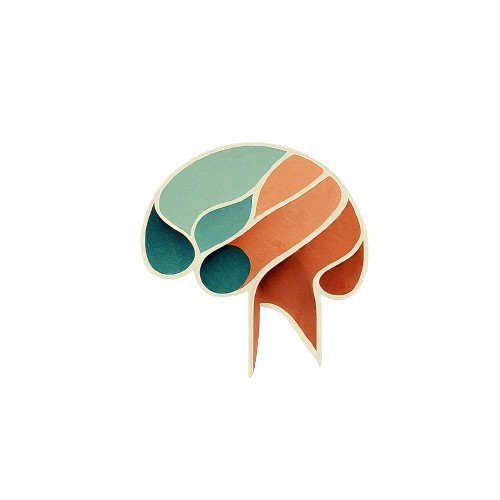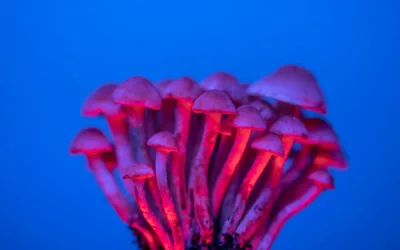Psychosis is a complex and often misunderstood aspect of mental health. It’s not a diagnosis in itself but rather a symptom that can occur in various mental health conditions. Understanding the different types of psychosis is crucial for proper diagnosis, treatment, and support. In this comprehensive guide, we’ll explore the spectrum of psychotic disorders, their symptoms, causes, and available treatment options.
Understanding Psychosis: The Basics
Before delving into the specific types of psychosis, it’s essential to understand what psychosis actually is. At its core, psychosis is a condition that affects a person’s mind, causing them to lose touch with reality. People experiencing psychosis may have difficulty distinguishing between what is real and what isn’t.
Key Symptoms of Psychosis
Psychosis typically manifests through two main types of symptoms:
- Hallucinations: These are sensory experiences that occur in the absence of an external stimulus. They can affect any of the five senses:
- Auditory (hearing voices or sounds)
- Visual (seeing things that aren’t there)
- Tactile (feeling sensations on the skin)
- Olfactory (smelling odors that don’t exist)
- Gustatory (tasting something that isn’t present)
- Delusions: These are fixed, false beliefs that persist despite evidence to the contrary. Common types of delusions include:
- Persecutory delusions (believing others are trying to harm you)
- Grandiose delusions (believing you have special powers or importance)
- Referential delusions (believing that insignificant remarks, events, or objects have personal meaning or significance)
In addition to these primary symptoms, individuals experiencing psychosis may also exhibit:
- Disorganized thinking and speech
- Altered sense of self
- Lack of motivation
- Social withdrawal
- Difficulty concentrating
- Changes in sleep patterns or appetite
Now that we have a foundational understanding of psychosis, let’s explore the various types of psychotic disorders and conditions that can involve psychotic symptoms.
1. Schizophrenia: The Most Well-Known Psychotic Disorder
Schizophrenia is perhaps the most recognized and studied psychotic disorder. It affects approximately 1% of the global population and is characterized by a range of symptoms that can significantly impact a person’s ability to function in daily life.
Key Features of Schizophrenia
- Positive Symptoms: These include hallucinations, delusions, and disorganized thinking or speech.
- Negative Symptoms: These involve a decrease in normal functioning, such as reduced emotional expression, lack of motivation, and social withdrawal.
- Cognitive Symptoms: These include difficulties with attention, memory, and executive functioning.
Subtypes of Schizophrenia
While the DSM-5 no longer recognizes distinct subtypes of schizophrenia, historically, the condition was divided into:
- Paranoid Schizophrenia
- Disorganized Schizophrenia
- Catatonic Schizophrenia
- Undifferentiated Schizophrenia
- Residual Schizophrenia
Understanding these historical subtypes can still be helpful in recognizing the varied presentations of schizophrenia.
Treatment Approaches for Schizophrenia
Treatment for schizophrenia typically involves a combination of:
- Antipsychotic medications
- Psychosocial interventions (e.g., cognitive-behavioral therapy, family therapy)
- Vocational rehabilitation
- Supported employment and education programs
Early intervention and consistent treatment can significantly improve outcomes for individuals with schizophrenia.
2. Schizoaffective Disorder: When Mood and Psychosis Intersect
Schizoaffective disorder is a condition that combines features of both schizophrenia and mood disorders (either bipolar disorder or major depression). This unique combination can make diagnosis and treatment particularly challenging.
Types of Schizoaffective Disorder
There are two main types of schizoaffective disorder:
- Bipolar Type: Includes episodes of mania and may also include episodes of major depression.
- Depressive Type: Includes only major depressive episodes.
Key Features of Schizoaffective Disorder
- Psychotic symptoms similar to those seen in schizophrenia
- Mood episodes (manic, hypomanic, or depressive) that occur for a substantial portion of the illness
- Periods of psychotic symptoms without mood symptoms lasting for at least two weeks
Treatment Approaches for Schizoaffective Disorder
Treatment often involves a combination of:
- Antipsychotic medications
- Mood stabilizers or antidepressants
- Psychotherapy
- Social skills training
- Vocational rehabilitation
The specific treatment plan depends on whether the individual has the bipolar or depressive type of schizoaffective disorder.
3. Brief Psychotic Disorder: When Psychosis is Temporary
Brief psychotic disorder is characterized by the sudden onset of psychotic symptoms that last for less than one month. This condition is often triggered by extreme stress or trauma.
Key Features of Brief Psychotic Disorder
- Sudden onset of psychotic symptoms (delusions, hallucinations, disorganized speech or behavior)
- Duration of symptoms is less than one month
- Eventually, full remission of symptoms and return to previous level of functioning
Potential Triggers for Brief Psychotic Disorder
- Extreme stress (e.g., loss of a loved one, natural disasters)
- Major life changes
- Postpartum period (in women)
- Certain medical conditions or substance use
Treatment Approaches for Brief Psychotic Disorder
Treatment typically involves:
- Short-term use of antipsychotic medications
- Supportive psychotherapy
- Stress management techniques
- Addressing underlying triggers or stressors
Most individuals with brief psychotic disorder recover fully, but ongoing monitoring is important as some may later develop other psychotic disorders.
4. Delusional Disorder: When Delusions Dominate
Delusional disorder is characterized by the presence of one or more delusions without other psychotic symptoms. Unlike in schizophrenia, individuals with delusional disorder often have relatively normal functioning outside of their delusional beliefs.
Types of Delusional Disorder
- Erotomanic Type (belief that someone is in love with them)
- Grandiose Type (belief in one’s inflated worth, power, or identity)
- Jealous Type (belief that a partner is unfaithful)
- Persecutory Type (belief that one is being conspired against or harmed)
- Somatic Type (belief about bodily functions or sensations)
- Mixed Type (combination of different types of delusions)
Treatment Approaches for Delusional Disorder
Treatment can be challenging, as individuals often have poor insight into their condition. Approaches may include:
- Antipsychotic medications
- Cognitive-behavioral therapy
- Supportive psychotherapy
- Family education and support
The goal is often to help the individual manage their delusions and improve their overall quality of life, rather than completely eliminating the delusions.
5. Substance/Medication-Induced Psychotic Disorder
This type of psychosis occurs as a direct result of substance use, intoxication, or withdrawal. It can be caused by both legal and illegal substances.
Common Substances Associated with Psychotic Symptoms
- Alcohol
- Cannabis
- Hallucinogens (e.g., LSD, psilocybin)
- Stimulants (e.g., cocaine, methamphetamine)
- Certain prescription medications
Treatment Approaches for Substance-Induced Psychosis
Treatment primarily involves:
- Discontinuation of the substance
- Supportive care and monitoring
- Short-term use of antipsychotic medications if needed
- Addiction treatment and rehabilitation
- Addressing any underlying mental health issues
Most cases of substance-induced psychosis resolve once the substance is out of the system, but in some cases, it can trigger the onset of a chronic psychotic disorder.
6. Psychotic Disorder Due to Another Medical Condition
Various medical conditions can cause psychotic symptoms. It’s crucial to identify and treat the underlying condition to address the psychotic symptoms effectively.
Medical Conditions That Can Cause Psychosis
- Brain tumors
- Epilepsy
- Stroke
- HIV/AIDS
- Neurodegenerative disorders (e.g., Alzheimer’s disease, Parkinson’s disease)
- Autoimmune disorders
- Certain metabolic or endocrine disorders
Treatment Approaches
Treatment focuses on addressing the underlying medical condition while managing psychotic symptoms. This may involve:
- Treating the primary medical condition
- Antipsychotic medications to manage psychotic symptoms
- Supportive care and monitoring
- Psychoeducation for the patient and family
7. Depression with Psychotic Features
Sometimes, severe depression can be accompanied by psychotic symptoms. This condition is known as psychotic depression or major depressive disorder with psychotic features.
Key Features of Depression with Psychotic Features
- Severe depressive symptoms
- Delusions or hallucinations that are typically mood-congruent (i.e., consistent with depressive themes)
- Common delusions include feelings of guilt, worthlessness, or deserved punishment
Treatment Approaches for Psychotic Depression
Treatment usually involves a combination of:
- Antidepressant medications
- Antipsychotic medications
- Electroconvulsive therapy (ECT) in severe cases
- Cognitive-behavioral therapy
- Supportive psychotherapy
8. Bipolar Disorder with Psychotic Features
Both manic and depressive episodes in bipolar disorder can sometimes include psychotic symptoms.
Psychotic Symptoms in Bipolar Disorder
- During manic episodes: Grandiose delusions, delusions of special abilities or identity
- During depressive episodes: Similar to those seen in psychotic depression
Treatment Approaches for Bipolar Disorder with Psychotic Features
Treatment typically involves:
- Mood stabilizers
- Antipsychotic medications
- Psychoeducation
- Cognitive-behavioral therapy
- Family-focused therapy
9. Postpartum Psychosis
Postpartum psychosis is a rare but serious condition that can occur shortly after childbirth. It’s considered a medical emergency due to the risk of harm to both the mother and the baby.
Key Features of Postpartum Psychosis
- Rapid onset of symptoms (usually within the first two weeks after delivery)
- Severe mood swings
- Delusions or hallucinations often related to the baby
- Disorganized behavior
- Confusion and disorientation
Treatment Approaches for Postpartum Psychosis
Treatment is intensive and usually involves:
- Hospitalization to ensure safety
- Mood stabilizers and/or antipsychotic medications
- Hormonal treatments in some cases
- Electroconvulsive therapy (ECT) in severe cases
- Psychotherapy and support for both the mother and family
With proper treatment, most women with postpartum psychosis recover fully.
The Importance of Early Intervention and Proper Diagnosis
Psychosis, in its various forms, can be a challenging and distressing experience for individuals and their loved ones. However, it’s crucial to remember that with proper diagnosis and treatment, many people with psychotic disorders can manage their symptoms effectively and lead fulfilling lives.
Key takeaways:
- Psychosis is a symptom, not a diagnosis, and can occur in various mental health and medical conditions.
- Early intervention is critical for better outcomes in all types of psychosis.
- Treatment usually involves a combination of medication, psychotherapy, and psychosocial support.
- Each type of psychosis may require a slightly different approach to treatment.
- Support from family, friends, and mental health professionals is crucial in the recovery process.
If you or someone you know is experiencing symptoms of psychosis, it’s important to seek help from a mental health professional as soon as possible. Remember, psychosis is treatable, and with the right support and care, recovery is possible.
By understanding the various types of psychosis and their treatments, we can work towards reducing stigma, promoting early intervention, and improving outcomes for individuals affected by these conditions.



